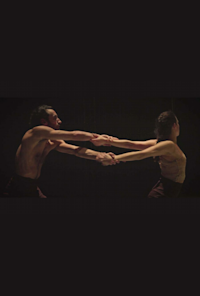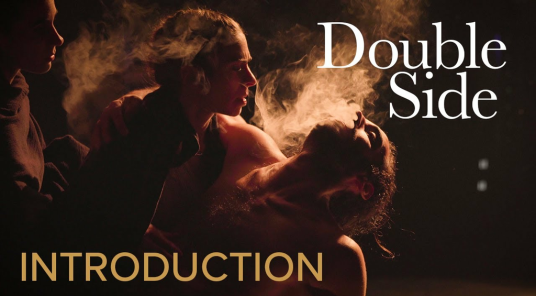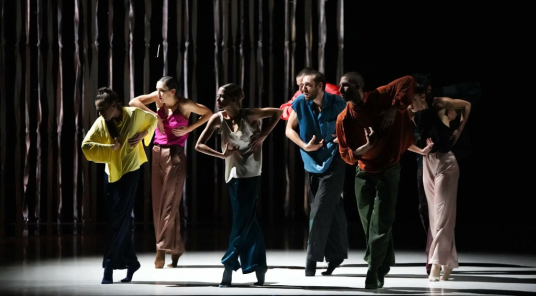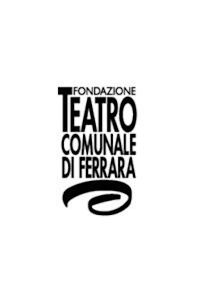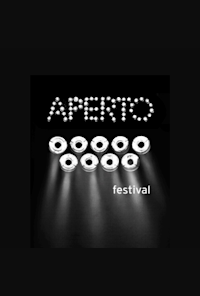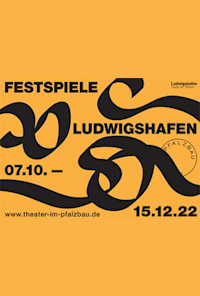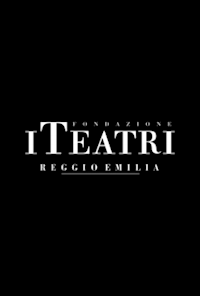Fondazione Nazionale della Danza / Aterballetto, a pioneering dance structure in Italy presents two choreographers from Canada and Cuba: Danièle Desnoyers and Norge Cedeño Raffo. In close collaboration with the Orchestra La Toscanini of Parma, Teatro Municipale Valli Reggio Emilia is the stage for Double Side, where an ensemble of dancers, singers and string players perform a baroque suite and Arvo Pärt's Stabat Mater.
Desnoyers comes from Montréal, the metropolis of modern Canadian dance, where her light and fluid style and her company have established him a fixture on the contemporary scene. With a strong sense of theatre , her creations always have a strong relationship with music. Her new work for Aterballetto is based on a suite by Federico Gon, an Italian baroque composer who was inspired by Henry Purcell. For his part, Raffo is inspired by religious music. The up-and-coming young choreographer is a former soloist with Danza Contemporánea de Cuba, the most important contemporary company in Cuba. Arvo Pärt's Stabat Mater becomes a painful farewell work for him. The Estonian composer set the medieval text on a mother’s sorrow to music in his characteristic reduced style. The moving effect of this music also characterises the expressive, free and pure dance. ‘How can one find hope in a broken world after such a great loss, how can one go on living?’ These are the existential questions of Norge Cedeño Raffo’s work.
STABAT MATER
The genesis of Stabat Mater dates from early 2021, when choreographer Norge Cedeño Raffo, arrived in Italy from Cuba for his first major production experience. Commissioned by the Fondazione Nazionale della Danza / Aterballetto and the Fondazione Arturo Toscanini in Parma, Norge Cedeño Raffo sets for dance Arvo Pärt’s Stabat Mater, a work for three singers and three musicians.
As ‘three’ is one of the compositional cornerstones of this Stabat Mater, Norge Cedeño Raffo chose to involve three dancers in the choreography. On stage, three bodies, three voices, three instruments meet, dialoguing together, emphasising the beauty of the piece and as sort of melodic wisdom.
Dancers, musicians and singers coexist in the same space, appearing and disappearing by turns. The spatial concept and the lighting design has been entrusted to Fabiana Piccioli, an artist active throughout Europe with major opera and choreographic productions. She uses special painted dance carpets, capable of capturing and transforming the effect of the lights, and reuses discarded material; the inner tubes of bicycle wheels from the dump take on new life on stage.
Norge Cedeño RaffoAterballetto
“From the first moment I was sent the music of Stabat Mater, I asked myself the question ‘what happens next?’ There is a strong reference to a chaotic reality, to a tortuous cycle that repeats itself, made of calamity, death, evanescence as if we become ashes all the time. But why not find in this reality a reference to the Arab Phoenix? To find in this ash, in this fire that burns you, in this reality that pierces you and that confronts you with the most risky and painful aspects of your life, a new opportunity to create, to be reborn, to be renewed?
The music from the point of view of emotionality creates a still-image, it is an apparently 'flat' piece of music and we have to dialogue all the time with changes of physicality, of emotionality with the continuous change of physical and scenic construction trying to keep the audience alert. A task to which we must always pay attention.“
Norge Cedeño Raffo, choreographer
WITH DROOPING WINGS
“For the choice of baroque music, Henry Purcell's music immediately came to mind. I naturally turned to works of various formats and origins. It was a fabulous adventure to carry with me almost the entirety of such a rich musical work. The chosen works were then revisited by the composer Federico Gon and will henceforth bear the name An English Suite. Then came the creation of a scenographic space, a receptacle imagined by Fabiana Piccioli through a series of exchanges and sharing of ideas. A space where music and dance meet and confront each other.
The idea of ‘what comes after’ has been omnipresent through a whole process. The idea of what happens after the ashes, what happens when nature takes over, what happens after listening to music. If the attentive listening of Purcell's work gave me the greatest of pleasures, I have also gradually put a certain distance between myself and this form of enjoyment.
Emotions are the flesh of this music. They are also linked to a period of history that is not our own. How can we adopt a critical position in front of these works whose magnificence and beauty give us as much pleasure as they do annoyance? How to contextualize this choice? How can we still feel concerned by this music today?
With drooping wings borrows its title from the last chorus from Purcell’s Dido and Aeneas. The broken wings are those of a fringe of society that is confronted with multiple inconsistencies. We are in the middle of many social upheavals. My creation inevitably enters in resonance with these upheavals. But these also give me a relationship to beauty that will cross all my choices. To summon beauty elsewhere than in the forms, but rather in the incarnation of resistance.
If the creation draws its source from an intimate relationship with this An English suite, With drooping wings is crossed by the idea of a distance. This suite of musical works, some glorious, others painful or sensitive, rubs up against a dance that carries a form of resistance within it. The work is crossed by a prodigious vitality just like Purcell's music. The musicians share the space with the dancers. One gives up his presence to the other. The idea of a succession of choreographic events is apparent throughout the piece. In the presence of silence, the choreographic interstices act out of step with the baroque spirit. As if these interstitial spaces became the most original dance, the most accurate in our current context. Then suddenly, when the two cohabit, what results becomes pure joy.“
Danièle Desnoyers, choreographer
